There is intense competition for eyeballs on the internet. This has led to an almost Darwinian-level pressure on photographers to up their game and produce über-processed images that never, ever have actually occurred in nature. It may draw the desired attention, but at what point does it go too far?
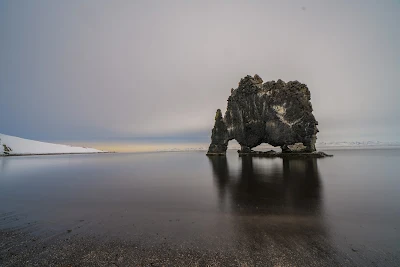 |
| How the top image looked straight out of the camera. |
I've been struggling with this issue for decades, ever since Photoshop was invented; ever since I
patented a digital camera whose
output could be authenticated as not having been manipulated by computer. In the old days if you wanted an image that stood apart from the competition you sought out great light. Today if your light isn't great it is perfectly acceptable to do some basic manipulation on your computer, like bumping up your contrast or making the sky a little more dramatic - you know, things that would be considered normal to do in a darkroom.
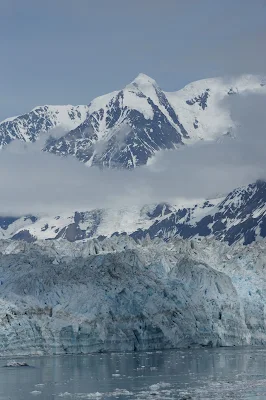 |
| A mountain in Alaska, straight out of the camera. |
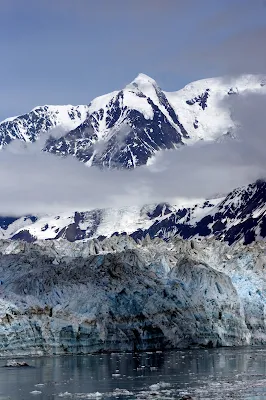 |
| Same image, but with a bit of curve manipulation to increase the contrast. |
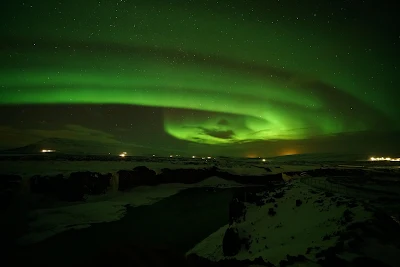 |
| Northern Lights in Iceland; .jpg from camera |
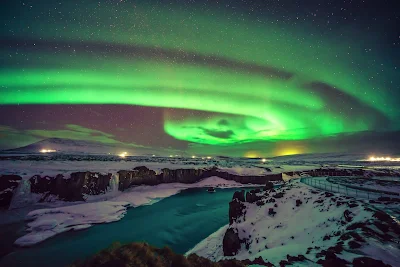 |
| Northern lights, RAW with a lot of curve manipulation. (Here's where 14-bit RAW can make a difference!) |
So where on the continuum does "too much manipulation" cross the line? In the past I've stopped at things like adding rainbows or changing the sky or doing anything that you would not have seen had you witnessed it yourself. (With
this image being the sole exception.) On the other hand, this was a working trip to Iceland where the light was overall pretty horrible and I needed to come back with some licensable images.
Armed with the realization that nobody cares about ethics anymore, I downloaded a program called
LandscapePro and was able to tweak the image at the top of this post in just 10 minutes (which included the time it took to learn the software!). The program even allows a reflection from the new sky to appear in any water below the horizon in the composition. Never in the history of the world has it been so easy to make an image look Photoshopped.
So now a new dilemma: Should I start selling fake images like these on the
FriedmanArchives.com website? Is the market for honest photography on its way out?
Thoughts about this subject are welcome in the comments. In the meantime, here are more images from last month's trip to Iceland. (Oh, and I'll answer last month's question about filters vs. in-camera apps below after a few announcements.)
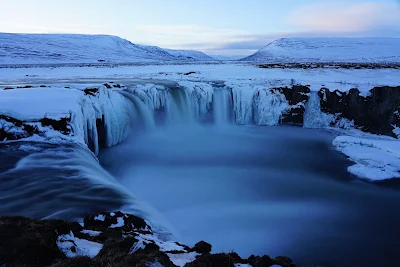 |
| Another wispy-waterfall, slow-shutter-speed shot. |
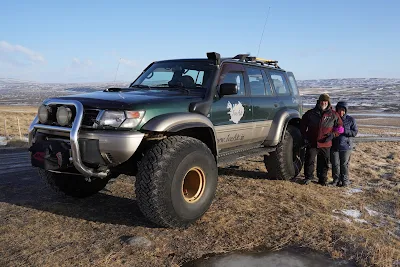 |
| A super jeep. We needed it to go to places that tourists just don't normally go in the wintertime. |
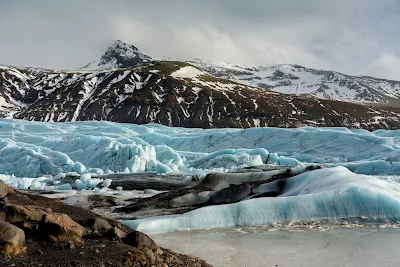 |
| Where the glacier meets the water. |
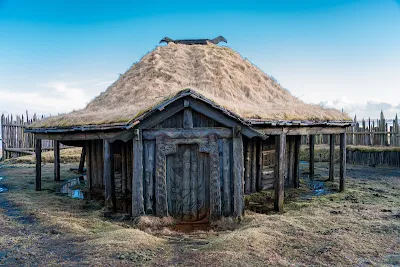 |
| 10 years ago they built a replica of an ancient Viking village for a Hollywood movie that died in pre-production. It has since decayed but sure was interesting to roam around in. |
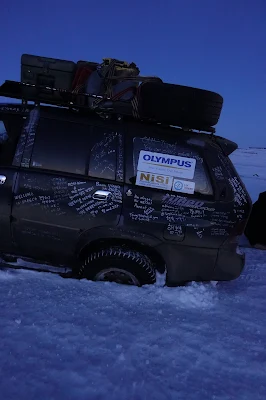 |
| So here we were traveling in the Super Jeep in literally the middle of nowhere, when we came across a Korean man and his wife stuck in the snow. Despite the signs warning of impassible roads, despite him having a 4WD car that he didn't know how to invoke, they were completely out of their element and had we not been there to pull them out (twice!) they surely would have frozen to death, as few people travel through the area. (Video of their 2nd rescue appears here.) |
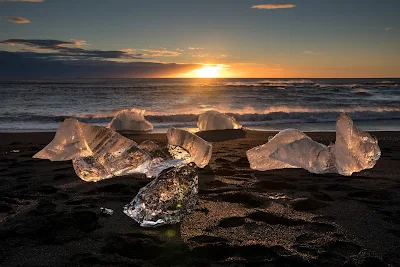 |
| This is "Ice Beach" from our first trip to Iceland in 2016. Chunks of ice from the nearby glacier break off and wash ashore nearly every morning. Some of the ice chunks are as large as a car! |
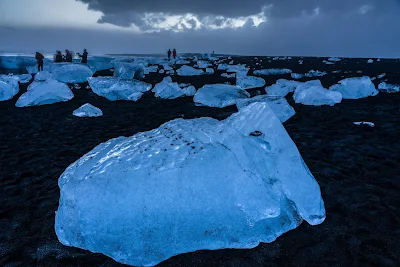 |
| This time the light was awful. So there were two tricks up my sleeve I could try... |
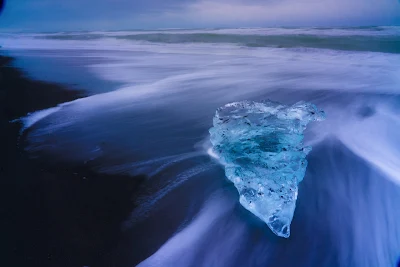 |
| Trick #1: Intensify the cool colors that were naturally there and shift the hues slightly toward the purple range. |
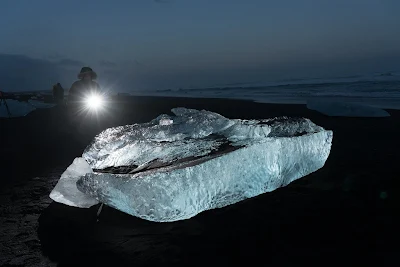 |
| Trick #2: Illuminate the ice using Wireless flash... |
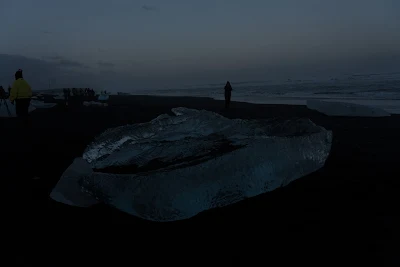 |
| ...then take an image without the flash (or the lighting assistant) in the shot... |
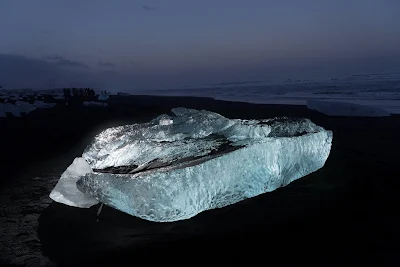 |
| ...then merge the two in photoshop. Hey, it's a little more interesting! |
Seminars!
In addition to the live seminars listed below, we are also working on a brand new one-day event revealing the secrets of great portrait photography, which I'll be conducting along with master portrait photographer Brian Ramage. Email me (Gary at Friedman Archives dot com) for more information on this or any of the events below!
- SPECIAL EVENT! Portrait Photography Workshop July 2018 - Orange County, California
- Atlanta, Georgia - August 18-19, 2018
- Boulder, Colorado - September 22-23, 2018
- Scottsdale, Arizona - November 2018
- Denmark - Spring 2019
In the Pipeline
Let me know if you'd like to be notified when these titles are ready.
- Sony A7 III (actually the book on the A7R III will be updated to include changes, since these cameras are nearly identical).
- Fujifilm X-H1 by Tony Phillips
Looking for 20 Volunteers to test...
I'm experimenting with a new ebook aimed at people who tweet, and I'm looking for feedback from beta testers to make sure my message is on-point. If you know of someone in that demographic who wants to learn some photographic secrets, please have them get in touch with me at @GaryLFriedman for a free evaluation copy.
ND Filter vs. In-Camera App
Last month's blog post ended in a kind of cliff-hanger, in that I had tested out two methods of achieving wispy renderings of moving objects in long exposures, and it ultimately ended in a draw - one was not clearly superior to the other. So which method did I end up using?
Okay, that was a trick question, since anyone who's ever shot in freezing 80mph winds and pelting hail knows the answer: the sheer convenience and fast set-up of the in-camera app quickly won out. Plus, the app nailed the exposure on the first try, whereas the filter method always had to be tweaked after evaluating the first exposure. Finally, there was the allure of the occasional panorama shot (another feature omitted from newer, high-end cameras) which made the A7R II my primary camera, with
the more weather-sealed A7R III getting relegated to backup camera status (*). Weather sealing or not, both cameras worked flawlessly in what have to be described as difficult conditions.
[ (*) Scholarly note: I'm sure my invitation to become a "Sony Artisan of Imagery" will be coming to me any minute now... :-) ]
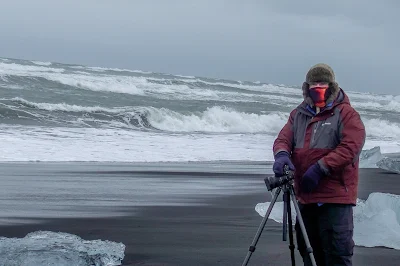 |
| I'm telling you, it was cold there! |
 |
| Yeah, I know the in-camera panoramas don't have the same resolution as if I had taken individual frames on a tripod and merged them on my computer. But I've discovered that when it's very cold you tend to do what's convenient. :-) |
Until next time...
Yours Truly, Gary Friedman




























Since the advent of image manipulation, we now feel we have to make up images. Once we had the honesty of film, now we have to have Lightroom, Photoshop and all the bells and whistles to paint a digital picture.
ReplyDeleteWhen did we lose sight of photography and confuse it for "ART" by adding all the elements that just were not there.
I prefer the honest shots with maybe a contrast tweak. Art does not make a better photographer.
Interesting that you use that terminology... ever since film photography it was struggling to be accepted as "art" by the art community.
DeleteYou cannot uninvent the wheel people. With film media and its limitations, we are constrained to produce a representation of the scene as the lens saw it and the film media captured it, hence a Photography. Now, we have new tools in the digital media era that is able to enhance or even create an Image that never truly existed in nature. I would suggest that the old archaic term of "photography" be dropped and redefine what is we now do with digital cameras and acknowledge what we actually do, and that is produce Imagery, not photographs. We don't ask of an artist such as Van Gogh to defend his visual interpretations of The Scream, do we? I prefer to define a digitally enhanced product as an IMAGE and leave it at that. The artist needs no apology nor an explanation to me as to how he/she created that IMAGE.
DeleteDo we ask of an artist like Van Gogh to defend his visual interpretation of The Scream ? Of course not. The constraints of film media limited us to produce what the lens saw and what the film medium captured. We don't shoot with film anymore. The digital camera has given us new tools to create whatever we interpret the scene to whatever the creator wishes his audience to see. When I see an interesting digital scene that is clearly manipulated, I no longer ask the producer to explain nor defend his Image, but accept it for what it is. Lets move away from the confinements of the archaic term of photography and define it for what it is, IMAGERY.
DeleteMixed feelings on this topic. Compared to art flowing from the creative mind through a brush onto a canvas photography, which initially struggled to be accepted as "art" is now experiencing a revolution in technology for taking images previously unimagined, but especially enhancing those images in digital darkrooms, far beyond what was available to Ansel. If I'm essentially buying "canned" shots and effects as in Landscape Professional, assembling or fabricating final images from multiple sources, then it really isn't my "capture." However, we need to consider whether the impressionism of Van Gogh was "real" or made up...
DeleteNot sure why we would ask Van Gogh to comment on The Scream. It was painted three years after his death by Edvard Munch.
DeleteHello People, Ansel Adams photographs were heavily manipulated in the dark room. Even today some people question whether photography is art.
DeleteGary, Interesting stuff as usual. As an old. amateur snapper who started with 35mm I am always reluctant to use Photoshop unless it is to fix an unforeseen fault in the image. Time spent composing a picture is never wasted but I have also fallen foul of the instant gratification digital can bring. Fortunately my images are just for fun/memories not to make a living. Some commercial photos are just stunning but totally fake, it will never happen but they should carry a symbol showing how much manipulation they have had, just as a reality check.
ReplyDeleteAll the best. Peter
Maybe we need a badge to differentiate real photos from photo-art. There's a place for both I think. I like your idea of camera that "authenticates" an un-retouched image.
ReplyDeleteThere's an analogous issue in the food industry that's been going on for decades. Are we eating real food or food that's been "enhanced" with preservatives, flavors, colors, etc. The dairy industry created the "Real" logo to identify milk products that are unaltered - but even those have been pasteurized and homogenized.
I think a photo that's had minor edits like adjustments to contrast and sharpening can be considered "Real". But the bizarre examples you show in your blog should be considered "photo art" - not professional photography!
It depends a lot on what your aims are. I your goal is artistic expression, go for what you want your image to look like, regardless of how you achieve it. If your goal is to produce a realistic representation of what you saw, minimal post processing is appropriate. If you aim to sell to National Geographic, they will only allow specific post processing, such as cropping.
ReplyDeleteOr moving a pyramid. :-)
DeleteBelieve me you could not et a more purist then me. I only shoot JPEG and do absolutely nothing, not even cropping. When it comes to NG you only have to look though their magazine and they do more than just crop. Also if you search and search all their articles by their photographers you will find they shoot raw and process more than just crop. Thanks Brian
Delete> If your goal is to produce a realistic representation of what you saw, minimal post processing is appropriate.
DeleteActually, it is quite the opposite. Because the camera does not at all see things like you do, if you stick with the SOOC JPEG you are guaranteed that it will not look anything like what you saw. You have to use a lot of fancy tricks like bracketing and whatnot to try to fill the gap, and it pretty much never works perfectly anyway (which is why I think it is a futile quest and people should just have fun and make the pictures they really want, rather than try to make pale copies of reality).
That's very true. Even DRO doesn't give quite the same log response that the eye does. But I'd go further. Every time you choose an exposure or a focal length or a viewpoint you are *creating* an image which someone else may not see. Photography is not merely recording nature.
DeleteI think the quesiton is whether we're trying to make the image look like what we saw or perceived, or whether w're not. I suspect that increasingly we're not.
I have to agree; You snap a photo, and feel you need to edit it, it is NOT the picture you took.
ReplyDeleteWhat's real anyway? Even fine artists juggled with reality, evidenced by the way Thomas Moran worked for example; he wasn't above rearranging the landscape slightly for a better composition. I wouldn't worry about it too much.
ReplyDeleteI am not a professional photographer, but when I make digital images, I will use the GIMP to crop for a better composition, apply automatic color leveling, and an unsharp filter. Sometimes I will increase the color saturation when it seems beneficial to do so. Other than that my pics remain largely unmolested and, happily, I get better results digitally than I ever did with film, largely due to the quality of the in-camera algorithms between the sensor and the final image file.
As an amateur photographer, I'll tweak a photo to make it look like what I saw. A little contrast, white balance, cropping that's about it.
ReplyDeleteThe above is precisely why I don't like post processing. When I started in photography about the most you could do is dodging and burning and of course cropping and that was only for those that could develop their film themselves. If you hadn't the good fortune or desire to learn darkroom than you were stuck with what came out of your camera or what your processor did to make a viewable print or slide. I HATE post processing and I've never made any bones about it (see some of my previous post). I admit, I feel cheated when some are able to get accolades and a "that a boy or girl" because they have mad post processing skills and the best I can do is labor over my camera bracketing shots and using my knowlegdge of exposure, composition and light to follow the physics and rules of photography to get the best picture I can. Only for someone to write their thesis explaining what should have been done in post to improve the image. That burns my craw! I believe a photo should be able to stand as it was taken, be good or bad because of spot on exposure, use of available light, composition, subject or composite of all the above. For all these reasons when I see a photo take first in a competition or even just looks good such as the one leading this article, I'm never all that impressed because I am 99% sure it was post processed to the n'th degree or.ran through some technological marvel of algorithms, zeros and ones. That said I don't begrudge using software to tweek exposure or dodge and burn. I still have lots of slides and the projector. Sometimes I get them out to show my grandkids and anyone else that will watch. Not to brag because frankly mist of them aren't that great but so I can share the avocation and hobby I love that makes me feel the artistry in my soul and yes, to hear the approving gasp of wonder from my 5 and 8 year old grandchildren when they see a gorgeous Monarch butterfly against the background of bright yellow daffodil or hummingbird caught hovering taking nectar from a beautiful flower. That's my 2 cents for what it's worth and I'm sticking with it. Thanks for reading.
ReplyDelete..this is not an absolute comparison. When you used photographic film, such as Kodacolor, it would have been created with many emulsion layers, with upwards of 20 different chemicals in each layer. So the chemist created what would be the equivalent of a digital camera jpg pre-set.
DeleteWhen you capture an image in RAW, is it what the eye sees or a limited range of the visual spectrum?
Is a photograph a manufactured static representation of the moment or is it an artist’s reflection of what he/she sees and interpreted as their unique presentation of that moment?
No camera will produce exactly what the eye sees only what the chemist or software engineers defines as the film or camera manufactures describes as ‘true’.
Photoshop allows for both enhancement and abuse but the result is a judgment for the creator and the viewer and as such provides freedom of expression; to be accepted or rejected.
Rob
... and thanks for writing!
DeleteWhile reading Garys article I took a look at the website of 'LandscapePro'. It seems to be most harmless tool that they purchase! With 'PortraitPro Studio' and 'PortraitPro Body Stdio' You will be able to create a beautiful princess from an frog without kissing it.
Brave new world ... I think I am too old for this. Looking on millions of 'great' overexposed pictures presented by google & co. I lost my motivation for taking (digital) photos.
My friends know I am a photographer, and they will share with me awesome photos they have found here and there on the internet. They want to know if I can “take” such photos. I usually educate my friends about how a particular photo came to look a certain way — Photoshop.
ReplyDeleteI’m on a local forum where a man posts “beautiful” sunsets with vibrant reds. The problem — at least to me — is that he uses Photoshop to bump up the colors. He and I are watching the same sunsets, but rarely are the ones I see so vibrantly red. 😀
I don’t mind a limited amount of post-processing. It’s when processing make photographs something totally different from what was shot that I have a problem.
Bonjour,
ReplyDeleteIn the beginning when you learn Photoshop, you'll probably do much to much. To see and know all the possibilities. Then suddenly you see everywhere around in the world how they used Photoshop..., and you soon go back to little manipulation and looking for the good light and composition.
And do not forget that jpeg IS a kind of build in camera Photoshop. So the argument I only use jpeg is kind of conformation to what some camera ingénieur choosed for you to like...
The Victorian photographers tried to raise photography to an art form,and Oscar Rejlander was noted for his “First Trick Photography” (1813–75), without Photoshop. Search on the web for details.
ReplyDeleteBRIAN.
Satisfying the senses is the quest and goal of the human race. A pile of veggies and a cut of meat in the hands of a chef can capture all our senses. The engineers and designers of the cameras we buy the cars we drive and the clothes we wear are appealing to our senses.
ReplyDeleteThe person we see in the mirror in the morning looks much different than the one that leaves the house. It’s all a creation to please ourselves and others we come in contact with. What’s wrong with that? Finding ways of pleasing our fellow man is what puts food on the table and a roof over our heads.
I’m not anxious to return to the days of smelly naked cavemen foraging for nuts, berries and raw meat. I like the edits we’ve made to our human condition.
Where are the lines between reality, art and fraud, and who decides where they’re drawn? Oh no, here come the PiCture police. PC… Get it?
I am of two minds on this subject.
ReplyDeleteOn the one hand, I like to capture images as close to the way the landscape looked as possible, so that minimal post processing is required, mainly because it saves a lot of time post processing, and I like images that look real.
On the other hand, we know cameras don't capture light the way our eyes do, or how our brains perceive it, so what's wrong with manipulating the image to produce what we saw, rather than merely what the camera is able to capture?
What offends me is when people manipulate the image to something that could not possibly appear in real life, and call it a photograph. If this is your artistic impression, and if you are trying to convey what you felt when you experienced the scene, then don't call it a photograph, because it isn't, it is computer generated art.
Hi Gary.
ReplyDeleteI followed your blog since I attended your course in Copenhagen now some years ago. It's a very difficult question you ask. Don't we all want to tweak our raw pictures a little bit, exposure, saturation etc., so they look like what your memory thinks your eyes saw??
But with AI it's now possible to generate pictures that never existed anywhere in nature but look like they did, "fake news". Your patent ought to be on all digital cameras.
Great pictures from Island, my wife and I were there in March 2016, no northern lights, but geysers.
Yours G. S. Frederiksen
Sometimes heavy post processing is fun in the sense of taking a so-so picture and seeing what you can make of it. It's the equivalent of painting portraits of Elvis or the Last Supper on velvet: scratches your artistic itch to do it, and somebody somewhere likes it enough to buy it, but don't consider the results Art.
ReplyDeleteFrom its inception photography has always struggled to be considered a true art. Today's overly processed images are NOT photography. To me the real art is using your camera as an artist uses a brush to capture what he sees. I saw an interview with Ansel Adams back in 1976, he was set up to take a photo of a mountain. He explained to the interviewer that he was patiently waiting for the right moment when the sun and shadows were just right. The interviewer asked now many exposures he would make. Adams stopped looking at the mountain got up and pressed the shutter then turned to the interviewer and said just one. That is an artist. To be a master of your craft and the tools. Photographers need to be masters of their cameras not their computers to be considered as artists like Adams, Weston, Lange, Smith, etc. Today's overly processed images should be called computography they are not photographic art.
ReplyDeleteJust came back to this blog post after reading some newer stuff. Read your post and have to say I totally agree.
DeleteI don't mind something like an obtrusive sign being cloned out and I don't mind the usual things like sharpening, contrast, clarity etc.
ReplyDeleteBut I really do mind when someone changes a picture from what it basically is to something very different. This, in my mind is total dishonesty and should never, ever, be acceptable.
Dear Anonymous:
DeleteShouldn't what is acceptable be the decision of the photographer. If you are an image buyer you can simply choose not to purchase it but to say that someone is dishonest when you admit to changes to things like contrast strikes me as disingenuous. I suppose you think it is okay to use an ND filter on a very long exposure to eliminate people from a landscape shot. So to what extent is your manipulation of an image okay but my manipulation in Photoshop dishonest. I would steer away from questioning one's honesty when you concede that you manipulate images as well. I suppose that would make you dishonest to someone even more conservative than you about altering an image.
The other side is shouldn't the sign be left because it IS there, not removed because it ISN'T there. If the photographer wanted the scene without the he or she should have moved to eliminate it. If that was impossible then it meant the sign is part of the scene and to present the photo without it is to represent the true scene. If a person wants to invent a pristine scene and call it art then learn to paint. In my opinion it's like a movie that bills as depicting true events yet the credits state certain artistic liberties were taken to "enhance" dramatic effect.
DeleteThen there are the folks who say they "never use Photoshop" but are happy to work with Topaz, say, or Lightroom, or whatever else is around. People believe their images are "natural" because for some reason, only the dreaded Photoshop evokes a reaction of suspicion. I use the old Elements 11, which is still Photoshop but very basic. Still ... I get asked if my images have been 'Shopped.
ReplyDeleteWith astrophotography, extensive post-processing is necessary. High ISO and long exposures are already pushing the limits. We can't deal with stars and nebulae and galaxies using regular programs and minimal work. Most photographers understand this. But with a landscape where light is falling in the wrong place and colors are totally out of whack, something's gotta give. When I see purple bands across a sky, I know this is not a natural effect.
Photos are art, true. But that's how many of them ought to be presented. Not as optical reality. We would never "see" those scenes in that way.
Great blog, Gary! This strikes a nerve with me. ~ Brenda Tate
Hi Gary, as always... an enjoyable and thought-provoking blog post. In response to your question, I would say it is very much a question of the intention(s) and personal preference(s). In my case, I love wandering around with my camera and taking photographs and I have no time to sit in front of my computer to fiddle with sliders. I suppose that I am more of a Kodachrome-type photographer... Thanks for your thoughtful and fun contributions on the journey. Cheers, GLYNN
ReplyDeleteHi Gary
ReplyDeleteI'm a fan who deeply appreciates your talents and insights. My response is one word: DISCLOSURE.
Have fun, push the limits, play and be creative. Just be honest. What's the point of all this technology if not to push the limits of creativity to explore an art form.
My two cents.
Best
Murray
Hello Gary, I receive your message 5/5. I have long had the same question. It is true that in some real scenes, you have to squint a bit to be able to duscerne some details. So I see nothing wrong in accentuating slightly some details in a digital print to make them more apparent and easy to be seen by people I show my pictures to. It is just a matter of making it more easy for them to perceive and to feel what I saw in reality when I took the picture. Should I go further in that matter I would consider myself making an image like an artist would make a painting. I would be interpreting something I see and let the reality inspire me into making a piece of art. It is a bit like the old friend you are talking about, talking about all his human qualities but not seeing his defaults anymore although they still are characteristics of your friend. That is, for me, the difference between a picture and an image and you may like both, of course but very often, people have a preference for the one or the other. Just my 2 cents. Jacques
ReplyDeleteThe 'honesty' in photography finished the first day digital cameras started to sell. Not that it was very honest in film days, but it was in the hands of few pros who had dark room access. Digital age opened the gates of hell to everage Joe, and the line between the two is getting blurred by every day. So it's almost impossible to state where one could stop, as the criteria for a pro are different from a man or woman in the street admiring a picture. In the end as long as you can bring a 'wow' out of your target audience, you're probably doing the right thing. I feel less embarrassed in doing photomanipulation ever since I read Steve McCurry doing it :) Great article Gary, but I think the SOOC in the first picture is more appealing to me than the mottled sunset sky, it takaes your gaze to the rock straight and that's the beauty of it! Great article and photograhs!
ReplyDeleteIt's been going on for decades when it comes to people and advertisements. Just look at what they do to models and what that has created. Uber people that don't exist in real life. With the advent of making more money on things like instagram and the like. It's no wonder people are created uber places to capture the eye.
ReplyDeleteI have less of a problem with the manipulation of landscapes...because I can see it as being an art form in it's own. However it should be denoted as such in my opinion.
I have been an amateur photographer for about 40 years. I started manipulating the final image the first time I added an ND filter to the lens, or the first time I dodged or burned an image in the darkroom. Let's be honest, intellectually that is no less a manipulation than Photoshop. It is simply that the digital revolution has now made image manipulation easier and with better tools. I chuckle at those photographers that have somehow convinced themselves that Photoshop manipulation does not represent what the photographer saw while finding no issue with employing darkroom tricks or lens additions. What would the purists call using a fisheye lens to capture an image. It certainly isn't what the photographer saw. Putting aside the realities of hoping to sell an image to an ever hungry public looking for spectacular images, my feeling is that if the manipulated image pleases the photographer, regardless of whether it is for sale or not, then it is fine with me. The purist argument rings hollow for me personally.
ReplyDeleteWell said, I agree. As an Engineer, I could certainly still crack the books and do complex calculations by hand, but why would I with the internet available? I suspect many of the purists are those that do not want to learn how to use the post processing tools, so they deride those who do.
DeleteOne difference may be that former analog photographers are tempered by their former darkroom experience and understand deviations in terms of negative density, paper contrast and developer.
ReplyDeleteThen there is the free NIK software plugin which set new standards for dramatic black and white skies. Are we all just a little bit guilty of over applying this wonderful plugin, Silver Effects?
Then are of course there are the clueless, who think they see the world objectively but are caught in some inner fantasy world like this wedding photographer.
https://www.stuff.co.nz/life-style/life/100581759/family-shares-professional-photographers-retouching-fail
Digitial imaging technology makes it too easy to call oneself a pro. The camera is professional. The person handling it, not for many years to come.
So..... flash guns, anti shake lenses, reflectors,
ReplyDeletePart of post processing for me is an effort to duplicate the impression I got while looking at the original scene. Trying to duplicate the grandeur of the Grand Canyon may require image manipulation. That's what Ansel Adams did in the darkroom.
ReplyDeleteInteresting discussion. Photo manipulation has been, and still is, a problem in news reporting for decades.
ReplyDeleteWell, there is photo artistry and there is photo photographs, at the opposite end of the scale. And the two blend into each other. And the camera cannot will not see what the eye sees, nor the intent of the photographer. Also, camera technology is just not good enough to reproduce faithfully the intent of the photographer. The keen observer will sort out the photos that are true to their purposefulness, and time will trash the rest…
ReplyDeletetrygkro
Well, there is photo artistry and there is photo photographs, at the opposite end of the scale. And the two blend into each other. And the camera cannot will not see what the eye sees, nor the intent of the photographer. Also, camera technology is just not good enough to reproduce faithfully the intent of the photographer. The keen observer will sort out the photos that are true to their purposefulness, and time will trash the rest…
ReplyDeletetrygkro
Well, there is photo artistry and there is photo photographs, at the opposite end of the scale. And the two blend into each other. And the camera cannot will not see what the eye sees, nor the intent of the photographer. Also, camera technology is just not good enough to reproduce faithfully the intent of the photographer. The keen observer will sort out the photos that are true to their purposefulness, and time will trash the rest…
ReplyDeleteI've been thinking about this great subject since reading Gary's blog yesterday. My conclusion aligns with others here. We are in the era of digital imagery where artists create images, not unlike what Warhol did with Marilyn Monroe; taking a digital image and creating art. This is not photography as we may believe it to be but digital art none the less. While I continue to believe that images that tell a compelling story or stir emotions without excessive manipulation reveal the true skills of the photographer, digital art is here to stay and we can assume some tweaking is going into any digital image we see.
ReplyDeleteOMG, I can not believe there is really anything to talk about here...the argument is way way overdone. What one does with a camera or a paintbrush is whatever one wants to do with ones camera or paintbrush. Period.
ReplyDeleteSure, that’s true, but as I mentioned, when a man posts to a public forum and photograph and says, this is a picture of last night’s sunset, is really if he’s bumped up the reds/saturation to give the photo a more vibrant look? His photographs look great, but they are not of the sunsets as naturally seen. Someone not knowing anything about Ohio and its sunsets would wrongly conclude that we have awesome sunsets every day. As one who has lived in Ohio, I can assure you we don’t.��
DeleteI’m no purist. I shoot a lot of high school basketball games. Often, the venues are dreadful, requiring post-processing work. In these instances, the in-camera processing got it wrong, and all I’m doing is manipulating the photos to return them to what I actually saw (or think I saw anyway) ��
I rarely take issue what how photographers process their work. I’m of the opinion that photography is art, but when we are presenting our art as a faithful, accurate representation of something, then we should be careful not to misrepresent.
Just my two cents. ��
And the one thing we are all forgetting.....
ReplyDeleteComposition.
Any amount of twidling with sliders does not make for a good composition, and thats what separates the photograher from the snapper
And what is cropping if not fixing the composition???
Deleteregarding nature photography and how I migrated from film to digital is straight forward because of what nature presents when I a out in it. If I can can hang the image in my home and be proud of the content and presentation, I am at peace.
ReplyDeleteI really don't want to enter in to this 'old chestnut' once again. Everyone has different taste, different objectives, and different eyes. We won't all agree. For me, the fun begins once I get an image in to the computer. Call it what you will; I call it fun....and I love it.
ReplyDeleteNo problem have fun.
DeleteI find many photos nowdays just way overdone. I don't want to see paintings which alot of them look like when done after photoshop. Sorry, i still want that natural look out of camera with little photoshop done. It just looks too fake when overdone like a painting.
ReplyDeleteAs an experiment: try to sell them both, wait for 10 years then calculate which one brought in the most revenue :) That way, you'll find out if overprocessed images are just a fad or here to stay.
ReplyDeleteI think it is time to start a society of true life photographers that will adhere to a clear set of standards on how far one can go before your image is considered a cooked image. How one can go about getting this started is the question of the day. There has to be some standard set!
ReplyDeleteIt's happened already in the journalism community.
DeleteHi Gary, is there a website about this topic in the journalism community?
ReplyDeleteGood question. A quick google search of "photojournalism ethics in the digital age" yields no shortage of websites which discusses this. These are mostly articles in high-falutin' publications. Somewhere on Page 2 you'll see a reference to Steve McCurry and his "photo editing scandal". :-)
DeleteI find that just accepting the JPEG image (which does not actually reflect what I saw in the highlights or shadows) boars me dreadfully. It documents the fact that I was there--who cares. I want to capture the emotion of the scene. That means shooting RAW and post processing. But I am not interested in replacing a sky, moving objects around, or adding anything that wasn't there.
ReplyDeleteI find that just accepting the JPEG image (which does not actually reflect what I saw in the highlights or shadows) boars me dreadfully. It documents the fact that I was there--who cares. I want to capture the emotion of the scene. That means shooting RAW and post processing. But I am not interested in replacing a sky, moving objects around, or adding anything that wasn't there.
ReplyDeleteI do astrophotography and to get teh images a lot of photpshopping is done, levels, curves because otherwise the image would take days to get an exposure.
ReplyDeleteBut I get annoyed with PSd images when they are used in advertising, particularly travel brochures. Sunsets that don't ever happen, expansive colourful views that just don't exist. I think there has to be a differentiation between 'Photos' and 'images' depending on their purpose, art or reality. Or often in the case of Astroimaging, scientific.